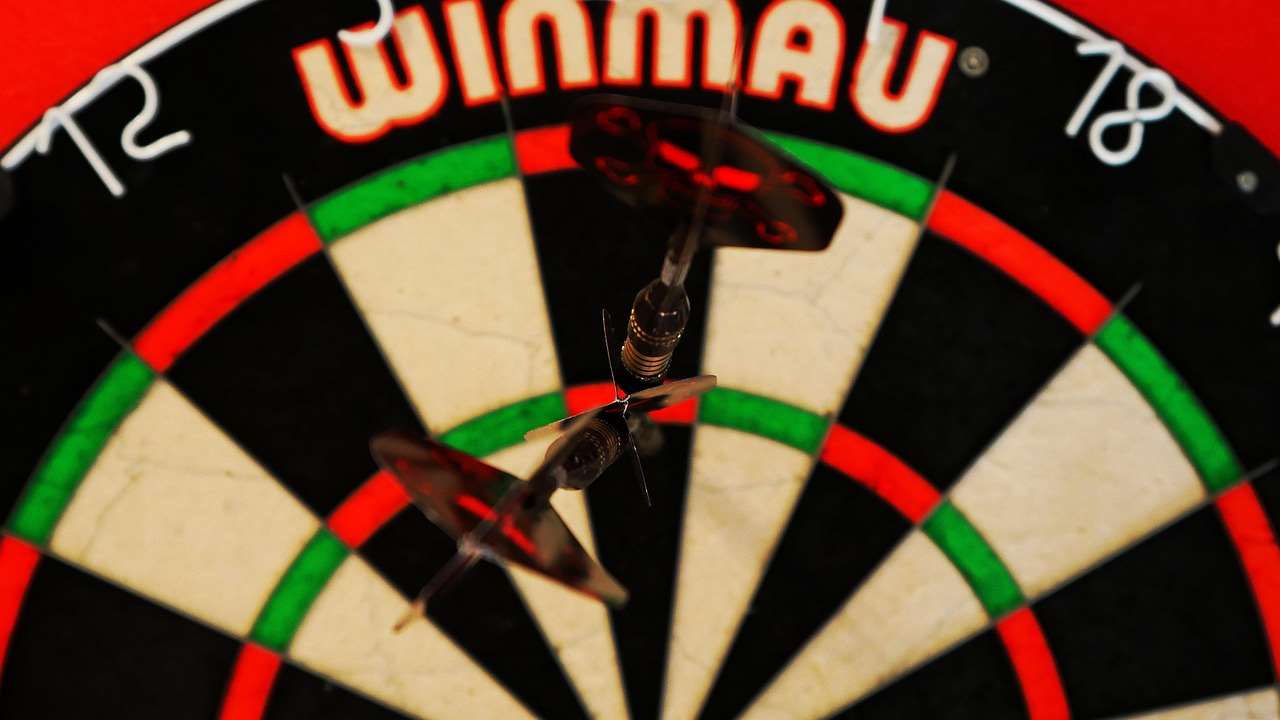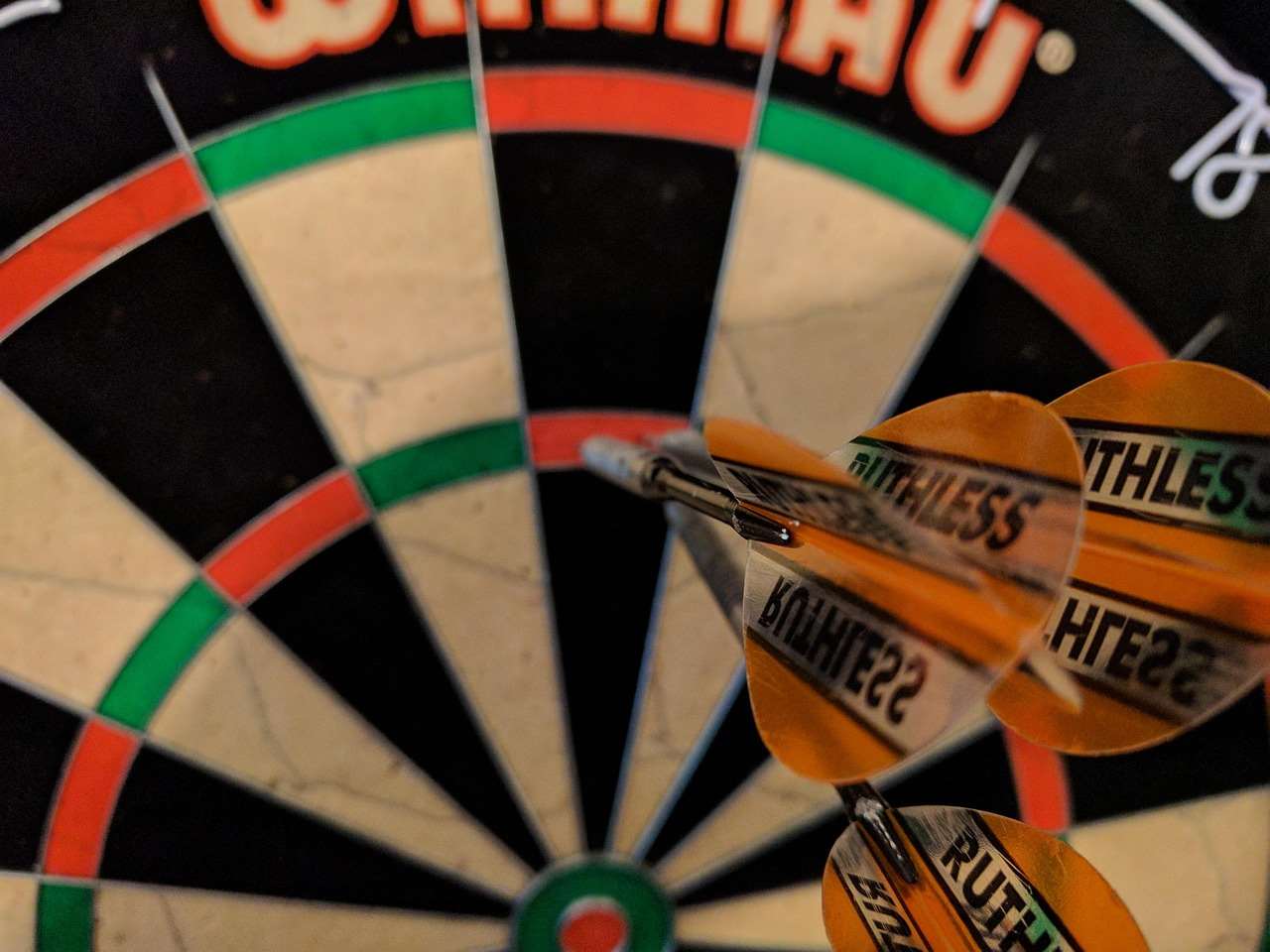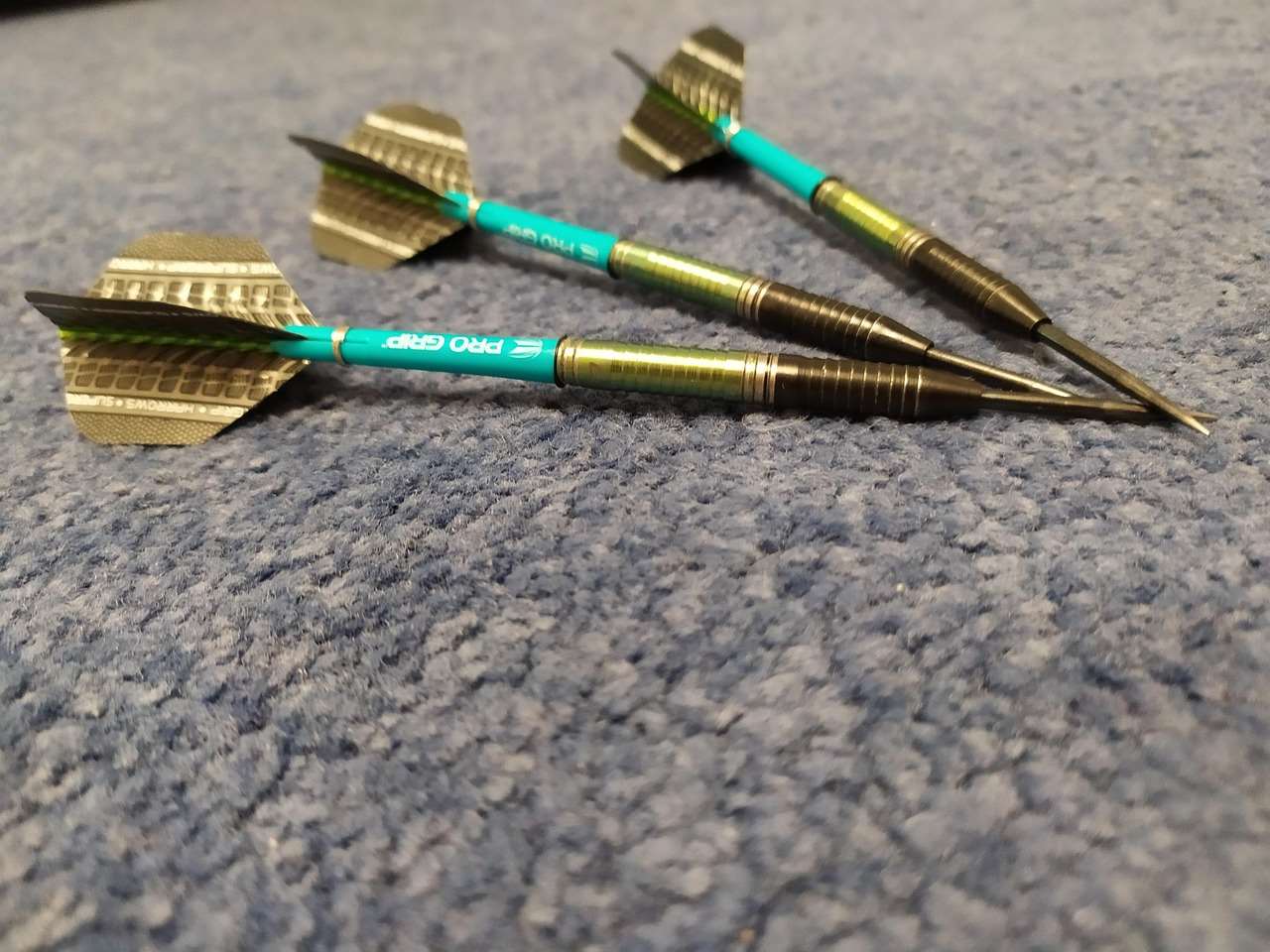In the game of darts, **darts how many points is the bullseye worth** is a crucial question for any player aiming for a high score. The outer bullseye, often called the single bull, is worth 25 points, while the inner bullseye, also known as the double bull, scores a significant 50 points. This article will comprehensively cover the scoring system in darts, different dartboard zones, strategies to maximize your score, and much more about this popular game.
⚠️ Still Using Pen & Paper (or a Chalkboard)?! ⚠️
Step into the future! The Dart Counter App handles all the scoring, suggests checkouts, and tracks your stats automatically. It's easier than you think!
Try the Smart Dart Counter App FREE!Ready for an upgrade? Click above!
Decoding the Dartboard: Understanding the Scoring Zones
The dartboard might seem like a chaotic arrangement of numbers, but it’s actually a carefully designed scoring system. Understanding each zone is key to strategic play. Let’s break down the different areas and their corresponding point values.
- Single Numbers: The large areas between the doubles and trebles are worth the number indicated.
- Doubles Ring: The outer ring doubles the value of the number.
- Trebles Ring: The inner ring triples the value of the number. This is the key to racking up high scores!
- Outer Bullseye (Single Bull): As mentioned, this is worth 25 points.
- Inner Bullseye (Double Bull): This coveted spot awards 50 points.

Knowing these zones allows players to target specific areas for maximum points. For instance, aiming for the treble 20 is a common strategy for quickly reducing your score in a 501 game, while mastering the double out is crucial for finishing a leg. The dartboard dimensions also plays a major role in game play and set up for darts set up wall.
Darts How Many Points is the Bullseye Worth: A Closer Look
Let’s delve deeper into the most valuable part of the dartboard. While the treble 20 is the highest single score on the board (60 points), the bullseye holds a special significance. Not only does it offer a substantial 50 points for the inner ring, but it’s also a central target, making it a potentially easier shot for some players compared to the thinner treble segments. The outer bullseye is worth 25 points, offering a safe alternative for players aiming for the center.
The Psychology of Aiming for the Bullseye
The decision of whether to target the bullseye depends on several factors, including a player’s skill level, the game being played, and the current score. For newer players, aiming for the broader target of the bullseye area can be a good strategy for consistently scoring points. More experienced players might reserve the bullseye for strategic finishes or when other high-scoring segments are blocked. It may be useful to know how many numbers in darts when thinking about where to aim on the board.
Many professional players practice regularly, targeting the bullseye to improve their accuracy and consistency. A focused approach, consistent stance, and smooth release are essential for consistently hitting the bullseye. Dart point diameter is a crucial component when trying to maintain that consistency.
Strategic Bullseye Usage in Different Dart Games
The value of the bullseye can change depending on the game you’re playing. Here’s how it’s used in some popular variations:
- 501/301: In these classic games, the bullseye is a valuable target for racking up points quickly or strategically finishing a leg.
- Cricket: In Cricket, the bullseye has unique scoring implications. The outer bull (25) and the inner bull (50) are both used for “closing” the bullseye segment, and they count as one and two marks, respectively.
- Around the World: Some variations require you to hit the bullseye as part of the sequence.

Understanding these nuances is crucial for adapting your bullseye strategy to the specific game. You can use an app like Cricket darts scorer app (https://dartcounterapp.com/) to follow along during a match.
Tips and Techniques for Mastering the Bullseye Shot
Improving your accuracy when aiming for the bullseye requires consistent practice and attention to technique. Here are some tips to help you refine your shot:
- Stance: Maintain a stable and balanced stance. Find what works best for you – whether it’s a side-on or more angled approach.
- Grip: Experiment with different grips to find one that feels comfortable and provides control. Don’t grip too tightly, as this can cause tension.
- Arm Movement: Keep your upper arm relatively still and focus on a smooth, pendulum-like motion with your forearm.
- Release: Release the dart at the same point in your throwing motion each time for consistent results.
- Follow Through: Follow through with your arm towards the target, ensuring a smooth and controlled release.
- Practice: Consistent practice is key to developing muscle memory and improving your accuracy.
Consider recording yourself throwing to identify any areas for improvement. Are you flinching? Is your release consistent? Small adjustments can make a big difference.
Common Mistakes to Avoid When Aiming for the Bullseye
Even experienced players can fall victim to common mistakes that affect their accuracy when aiming for the bullseye. Here are some pitfalls to avoid:
- Rushing the Shot: Taking your time and focusing on your technique is more important than speed.
- Gripping Too Tightly: A tense grip can lead to erratic throws. Relax your hand and focus on control.
- Moving Your Head: Keep your head still throughout your throwing motion to maintain a consistent sightline.
- Not Following Through: A weak or incomplete follow-through can cause the dart to veer off course.
- Ignoring Your Stance: A wobbly or unbalanced stance can significantly impact your accuracy.

By being mindful of these common mistakes and actively working to correct them, you can improve your consistency and accuracy when targeting the bullseye. Remember that mastering the art of darts keep score is just as important as hitting the bullseye!
Choosing the Right Darts for Bullseye Accuracy
The type of darts you use can also impact your ability to hit the bullseye consistently. Consider the following factors when selecting your darts:
- Weight: Experiment with different weights to find what feels most comfortable and controllable for you.
- Grip: Choose darts with a grip that suits your throwing style. Some players prefer a smooth barrel, while others prefer a more textured grip. Consider exploring dart shaft dimensions.
- Shape: The shape of the dart can affect its flight path. Torpedo-shaped darts are often preferred by beginners, while more experienced players may prefer a straight barrel.
- Flights: The size and shape of the flights can also impact the dart’s stability and trajectory.
Visiting a local darts shop can be a great way to try out different darts and get personalized advice from experienced players. Trying out a dart list length will also help you pick the best dart for you.
Advanced Bullseye Strategies and Techniques
Once you’ve mastered the basics, you can explore more advanced strategies for using the bullseye to your advantage:
- Double-Out Finishes: Practice finishing legs with the bullseye as your double. For example, if you need 50 to win, hitting the double bull is the perfect finish.
- Strategic Blocking: If your opponent is close to finishing, you can strategically block their preferred targets, forcing them to aim for the bullseye, which may be their weaker shot.
- Using the Bullseye as a Setup: In some situations, hitting the single bull (25) can set you up for a better shot on a higher-scoring segment on your next throw.

By thinking strategically about how to use the bullseye, you can gain a competitive edge over your opponents.
The Importance of Mental Game in Hitting the Bullseye
Darts is as much a mental game as it is a physical one. Maintaining focus, managing pressure, and staying confident are crucial for consistently hitting the bullseye. Here are some tips for developing a strong mental game:
- Visualization: Before each throw, visualize the dart hitting the bullseye. This can help boost your confidence and improve your focus.
- Positive Self-Talk: Replace negative thoughts with positive affirmations. Believe in your ability to hit the target.
- Breathing Techniques: Use deep breathing techniques to calm your nerves and reduce anxiety.
- Focus on the Process: Instead of dwelling on the outcome, focus on executing your throwing technique correctly.
- Learn from Mistakes: Don’t get discouraged by missed shots. Analyze what went wrong and learn from your mistakes.
Developing a strong mental game takes time and practice, but it’s an essential part of becoming a successful darts player. The bv darts seizoen 2 players also show mental tenacity and focus.
Beyond the Bullseye: Expanding Your Darting Horizons
While mastering the bullseye is a significant achievement, it’s just one aspect of becoming a well-rounded darts player. Continue to practice your doubles, trebles, and overall accuracy to elevate your game. Participating in local leagues or tournaments can also provide valuable experience and help you improve your skills. Additionally, stay updated on the latest darts news, professional tournaments like darts masters australia, and equipment innovations to further enhance your passion for the sport. It’s also important to know what’s the darts scores tonight, even if you aren’t actively playing.

Conclusion
Ultimately, **darts how many points is the bullseye worth** boils down to 25 points for the outer ring and 50 points for the inner ring. Mastering this target is crucial for success in many dart games. By understanding the scoring system, practicing your technique, and developing a strong mental game, you can significantly improve your accuracy and consistency when aiming for the bullseye. So, grab your darts, focus your aim, and start practicing today to unlock your full darting potential!
Ready to take your dart game to the next level? Consider joining a local darts league or purchasing a high-quality dartboard to practice at home. Good luck and happy darting!
Hi, I’m Dieter, and I created Dartcounter (Dartcounterapp.com). My motivation wasn’t being a darts expert – quite the opposite! When I first started playing, I loved the game but found keeping accurate scores and tracking stats difficult and distracting.
I figured I couldn’t be the only one struggling with this. So, I decided to build a solution: an easy-to-use application that everyone, no matter their experience level, could use to manage scoring effortlessly.
My goal for Dartcounter was simple: let the app handle the numbers – the scoring, the averages, the stats, even checkout suggestions – so players could focus purely on their throw and enjoying the game. It began as a way to solve my own beginner’s problem, and I’m thrilled it has grown into a helpful tool for the wider darts community.